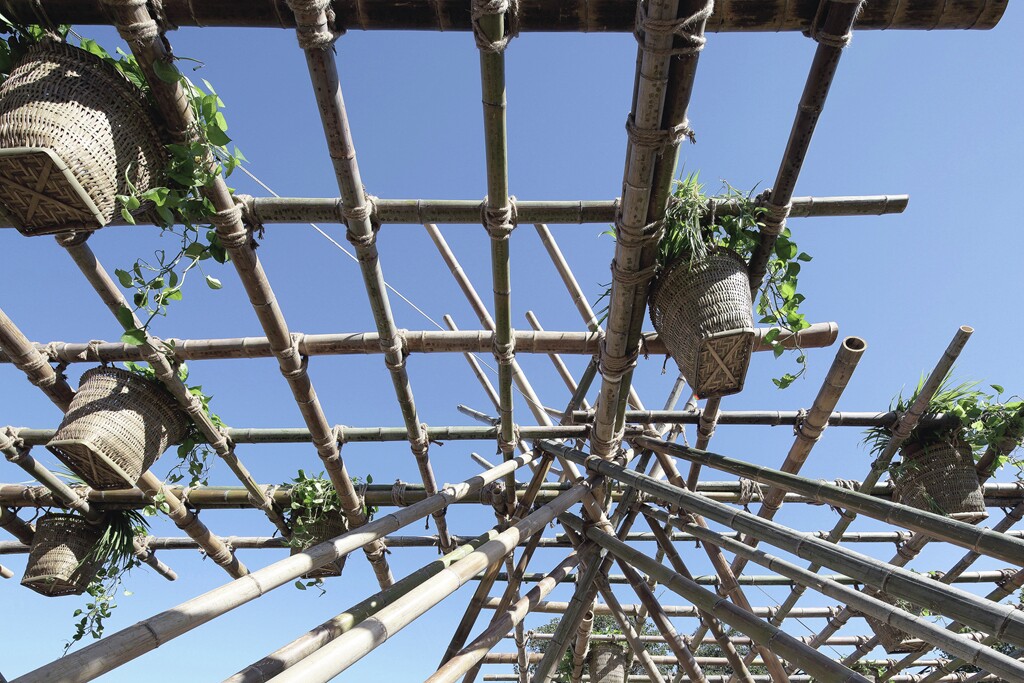Chinese architecture and design collective Penda reckons bamboo should be a more widespread construction material than it currently is. To promote this view, the firm produced a pavilion, dubbed Rising Canes, for this year's Beijing Design Week. The installation comprises a prototype bamboo framework that Penda envisions as a basis for a modular housing system in the future.
If Rising Canes looks familiar, that may be because it bears a resemblance to Penda's previous one with the birds concept.
No screws, nails, or glue were required for the installation, and it was secured with ropes, thus ensuring it can be relatively easily dismantled and recycled if required. The structure measures 4.40 m (14.5 ft) wide, and 3.80 m (12.5 ft) high, and the floor is raised slightly off the ground. Some 200 bamboo canes were used in the build, and Penda added buckets of seeds that will eventually grow to cover the pavilion with greenery.

Penda envisions Rising Canes as a sustainable housing project, and the firm's renders depict an initially modest shelter being expanded into a considerable development housing up to 20,000 people. All of which is perhaps best taken with a pinch of salt for the time being.
Still, Rising Canes does have potential for practical application, and one could imagine it serving as a starting point for a basic emergency shelter, along the same lines as the Temporary Shelter in Nepal, for example.
"The use of natural materials like bamboo in a smart, modular system, gives the structure the freedom to grow in every direction," says Penda. "By adding and connecting new bamboo canes, the structure grows and becomes stronger, able to take on more loads. To ensure a steady building material supply, a neighboring bamboo grove is planted. For each culm of bamboo taken as a construction material, two new trees must be planted to the forest. "
Source: Penda via Arch Daily






















